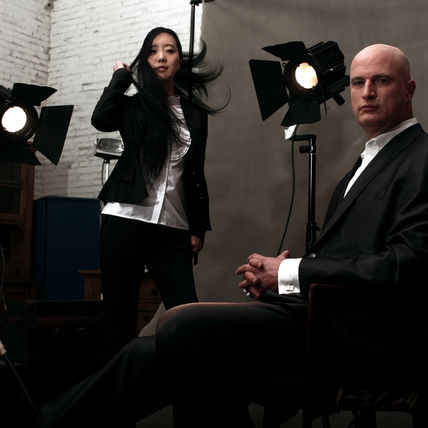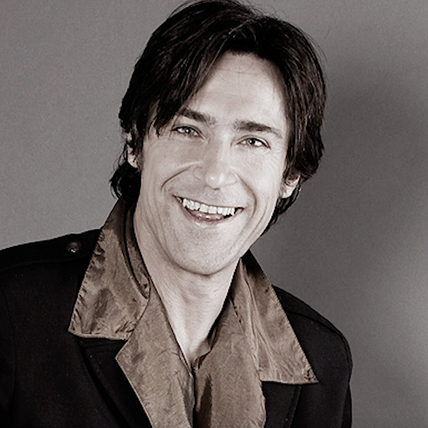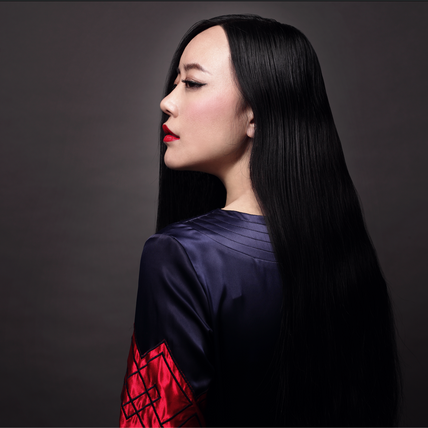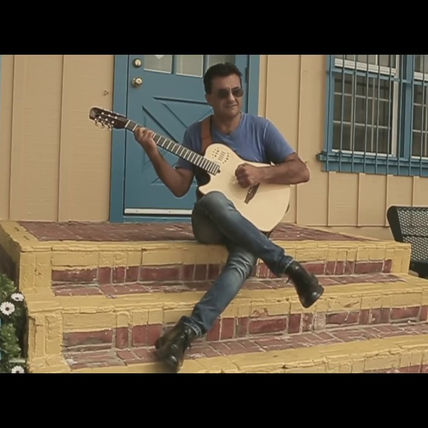
ARTISTS
we will introduce more new artists hereWe will introduce you to artists and musicians from all over the world, and show you their works, as well as the process of making art and music, and their ups and downs of life stories. We will also organize various activities and creativity The performance experience creates opportunities for you to meet and communicate with artists face to face. We are waiting for you in the JOMO studio in Las Vegas to participate in our various creative artist exchange activities. This is just a new beginning. Let us help each other and cooperate to push art and commerce to a higher level, bringing fans and music/artists closer together. .

STEN’s Professional BIO
In 1974, when he was just four years old, Stéphane heard Claude François’s “Soudain il ne reste qu’une chanson,” the French version of “I’ll Be Around,” on the radio and found his calling.
At his birthday party at the local community center, in the Malmousque ( Marseille ) where he lived with his mother and maternal grandparents, he got up on stage for the first time and sang and danced what was to become his lucky song.
A few years later, Claude François was going to perform at the Théâtre de Verdure in Nice. Despite his young age, Stéphane convinced his mother to find a way for him to be part of the performance: he absolutely had to sing in his idol’s show.
And he did! In July 1977, just 7 years old, Stéphane was part of the opening act for Claude François’s show.
After his performance, Cloclo himself came up to the little boy and said:
“YOU WILL BE MY HEIR!”
Hearing this, Stéphane’s mom took the artist into his dressing room and told him the truth: he was the boy’s father. In a state of shock but astonished by his unknown son’s talent, Claude decided to take Stéphane under his wing and told his mother that he’d make his paternity public in the coming weeks. But time was not on his side.
When Claude François died on March 11, 1978, Stéphane’s mother preferred to bury the family secret rather than make his disappearance even more tragic. But she allowed Stéphane to follow his heart and keep performing a revival of Claude’s show.
In 1980, she even created a not-for-profit called “SOS Vive Cloclo” under the aegis of the French Academy of National Devotion.
Stéphane’s group, “Stéphane et ses Stéphanettes,” performed wherever they were asked to: charity shows, company Christmas parties, Casinos in Nice (Casino Ruhl) and Monaco, the Théâtre de Verdures (an unforgettable place for Stéphane, where they performed several times), and “artistic and cultural festivals” held in various arenas in the south of France, especially the first “Festival de la chanson française” in Juan les Pins, which put him on the front page of France Soir under the title “Budding Star.”
In summer ’82, Stéphane began touring in northern France and Belgium for the Trebor talent agency, and was invited that same year to perform with François Valérie on Télé Monte Carlo’s show, “3000 Chansons.” Articles about him followed, including in OK! magazine, which gave him a full-page spread when he was invited to sit on the jury with Jean Luc Lahaye for the magazine’s big event, Miss OK!
He joined Prisca, the lead “Clodette,” when the dancers performed in hommage to Claude at Paris’s Cirque d’Hiver and Salle Wagram, and at the Voum-Voum, the big discotheque in Juan les Pins.
Stéphane’s mother decided that with one gala after another, Claude was taking over Stéphane’s life, and she felt overwhelmed because Stéphane thought only of being on stage, in the spotlight. Faced with relentless media coverage and some overly nosy journalists, she left France, taking her son with her.
Exiled in New York, Stéphane progressively separated himself from his idol and developed his own personality. Leaving the life of the precocious star far behind, he pursued his studies while continuing to take voice, dance, and music lessons with top-notch professors.
Noticed by Jim Fox, a talent scout for Kids and Company, Stéphane was given auditions and eventually hired by “Kids R us” for a commercial. He also did fashion shoots, frequented musicians, and composed his first songs under the influence of American musical culture.
When he was 17, after learning who his father was, Stéphane returned to the south of France, where he intended to meet his brothers.
Through an agent, he met the talented young composer Pascal Lafa and took advantage of this first contact to move to Paris.
By day, he worked as a barman at Pierre Cardin’s Résidence Maxim’s; by night he played in various restaurants and piano bars.
He met other musicians, composed, recorded, and tried to make contacts in the recording industry.
Living part time in Paris and part time in the south of France, Stéphane competed in several singing competitions and performed his own music as the opening act for C. Jérome’s and Hervé Villard’s concerts at Marseille’s Théâtre de l’Odéon. He became friends with Richard Sanderson and met and worked with a variety of performers: Alex Toesca, Jean Krishma (winner of the Sacem’s award for author work ), Cédric Naimi (Joker Promotion). From 1991 to 1994, Stéphane lived in the south again, where he was an extra for the Opéra de Marseille ballet and returned to studying classical music. At the same time, he produced his own music on tape or accompanied himself on synthesizer. He put together a funk group called Out Spiral, then joined the hard-rock band Blastead, playing all over the Provence-Alpes-Côte d’Azur region.
In 1993, Elio Parienti from “Help Productions” noticed him at the “Le Molière” piano bar and asked him to record “Rêver de Toi” as a single (45 rpm). Three months later, when he was playing at Marseille’s International Festival, a Japanese producer who was visiting France offered him an 18-month contract to perform in a Parisian revue in Japan. Even though he was getting positive feedback on his demo records, Stéphane accepted the offer and gained some additional experience and some stability, which he welcomed after several years of moving around.
After he returned to France, Morgan Productions, the co-producer of the Japanese tour, asked him to perform in its shows and compete in the televised singing competition being held on channel France 3’s show, “C’est l’été.” The casting manager, Isabelle Lega, recommended him to Eddy Marouani, who gave him a 3-year artist contract and introduced him to the composer Carlos Leresche who, at their first meeting,wthout knowing who he was suggested Stéphane record an unpublished song Leresche had written with Claude François. Leresche then sponsored him to join France’s professional composers’ society (the Sacem).
Claude junior, who managed his father’s distribution rights, objected to marketing that song, but suggested that Stéphane reprise their father’s repertoire. Returning to his home in the Paris suburbs, he turned on the radio and heard “l’ll Be Around,” the original version of the Claude François song that had shaped Stéphane’s childhood “Soudain il ne reste qu'une chanson”.
The lyrics in English and the musical style were a perfect fit given Stéphane’s influences at the time.
So at 33, he accepted the challenge and decided to make a symbolic return to his lucky song, even if it would have repercussions on his personal life. After obtaining the reproduction rights from Warner/Chappell Music and meeting Saint Bertrand, an American producer, at the Midem in Cannes, he recorded the song in New York with artistic director Dany Brown, who not only cosigned an entire album with him built around that song, but then offered to produce an album in a musical style befitting him.
“Life's Direction,” the title song of the album produced by Dany Brown on the Daswing Productionz Ltd label, will be released on May 19, 2017.
Biography translated by Naomi Norberg from the french version of Hélène Tourtet

In Tibetan, JOMO means "goddess". Luddy, an electronic musician from Chicago, met Shanghai girl Pan Luoyi in 2003. This American musician with a deep foundation in classical music and 20 years of experience in jazz studies believes that he has finally found a sound suitable for his music. He was deeply fascinated by the voice of this Shanghai girl. Since then, the two decided to work together to manage a combination— —JOMO.Member introduction edit voice
Luddy: A musician from Chicago with the Chinese name "Le Di". Luddy has an extremely deep classical
Music skills, and 20 years of jazz study experience. However, before forming JOMO, he was a well-known American scholar and founder of the science and technology field. He has several doctorates in literature, electricity, and computer science. Keen musical talent and rational logical thinking have been perfectly integrated in him. At JOMO, he is responsible for the composition of lyrics and music of the band's works, and the arrangement of instrumental music. He is especially good at creating blurred and profound music spaces with high-tech means.
Pan Luoyi: Before forming the JOMO group, Pan Luoyi was an active musician in the performing arts circles at home and abroad, and he was also well-known in the music scene in Singapore and Malaysia. Pan Luoyi learned music from his father when he was a child, and he was well versed in the essence of classical singing, and he was able to grasp modern music with ease. In addition to endless creativity, she also has a soft, satin-like voice, and her profound classical music skills make her singing out of the ranks of pop singers. JOMO’s music combines the beauty of classical music with the dazzling blur of modern electronic music. With a very humanistic attitude, they infiltrate the ancient and mysterious culture of Asia into modern music elements, and bring the music with an experimental attitude. In an alternative world, it promotes the combination of humanity and virtual space, and the combination of ancient civilization and modern technology. Their music records humanistic stories that transcend time and space, opening a new page in Asian music





Artist Bio
Jon Varto was raised in Addis Ababa, Ethiopia, but his talent and passion for music came to life on Christmas Eve when he received his first guitar at the age of six. At his young adolescent age with his childhood friends he formed a band. Practicing late nights and during the Ethiopian revolution of 1978, risking all for their band.
Soon after the SEVAN BAND was formed and it was the beginning of their passion for music. In 1986 conditions in Ethiopia were unstable, leading him to journey to Los Angeles, California. He continued his musical career, performing as a professional vocalist.
From his enchanting melodies, romantic Italian ballads, and inspirational Amharic songs to his vibrant Spanish flavor, Jon Varto has captivated listeners from all over the world. Jon Varto’s international sound has brought joy to an array of celebrities. Having performed with some of the industries best musicians, Jon Varto has established high standards with his music.



